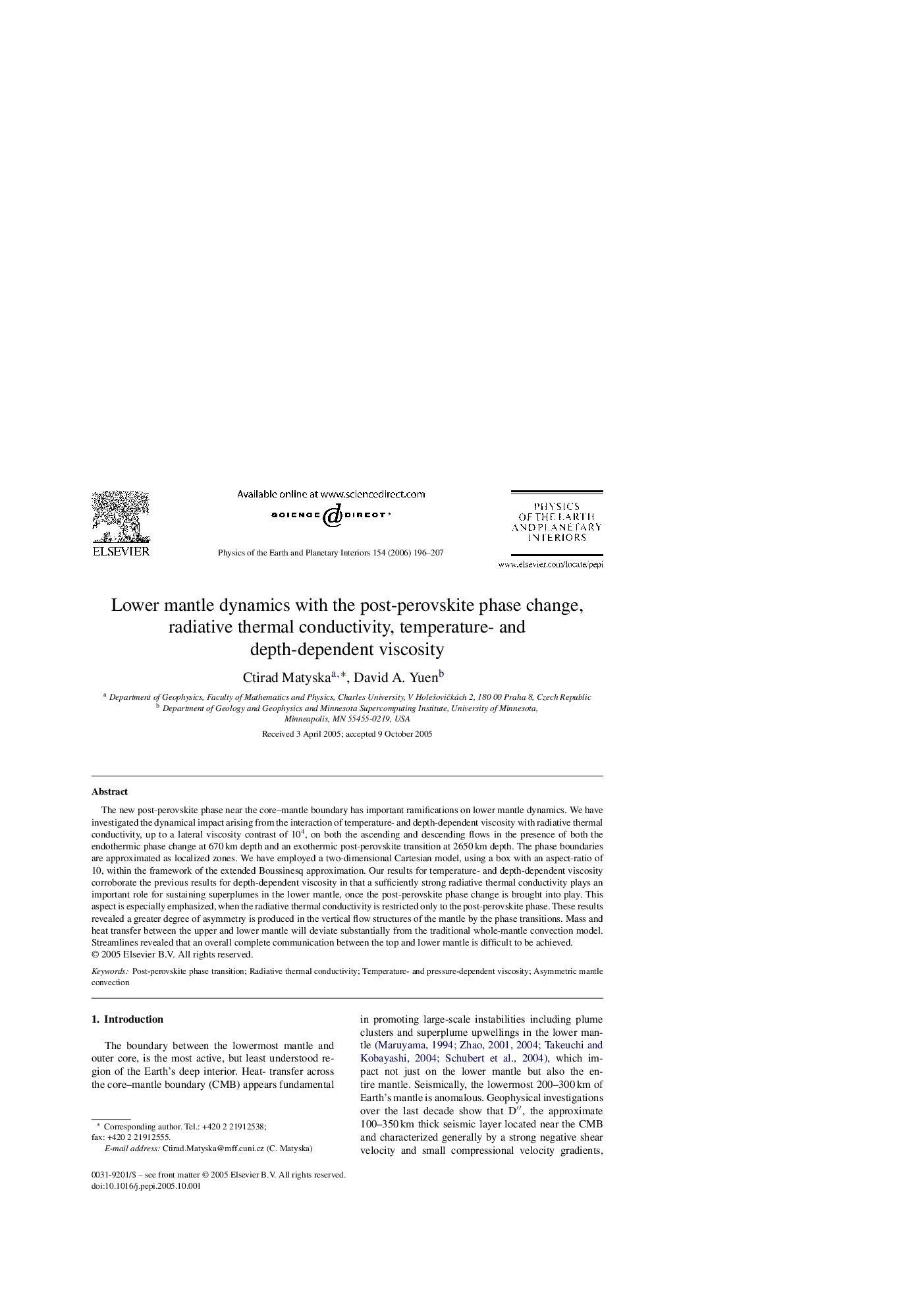| Article ID | Journal | Published Year | Pages | File Type |
|---|---|---|---|---|
| 4742757 | Physics of the Earth and Planetary Interiors | 2006 | 12 Pages |
The new post-perovskite phase near the core–mantle boundary has important ramifications on lower mantle dynamics. We have investigated the dynamical impact arising from the interaction of temperature- and depth-dependent viscosity with radiative thermal conductivity, up to a lateral viscosity contrast of 104104, on both the ascending and descending flows in the presence of both the endothermic phase change at 670 km depth and an exothermic post-perovskite transition at 2650 km depth. The phase boundaries are approximated as localized zones. We have employed a two-dimensional Cartesian model, using a box with an aspect-ratio of 10, within the framework of the extended Boussinesq approximation. Our results for temperature- and depth-dependent viscosity corroborate the previous results for depth-dependent viscosity in that a sufficiently strong radiative thermal conductivity plays an important role for sustaining superplumes in the lower mantle, once the post-perovskite phase change is brought into play. This aspect is especially emphasized, when the radiative thermal conductivity is restricted only to the post-perovskite phase. These results revealed a greater degree of asymmetry is produced in the vertical flow structures of the mantle by the phase transitions. Mass and heat transfer between the upper and lower mantle will deviate substantially from the traditional whole-mantle convection model. Streamlines revealed that an overall complete communication between the top and lower mantle is difficult to be achieved.
